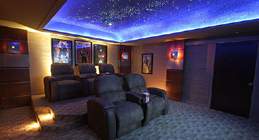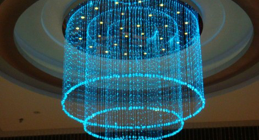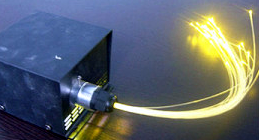What are Fiber Optics?
Fiber optics (optical fibers) are long, thin strands of very pure glass about the diameter of a human hair. They are arranged in bundles called optical cables and used to transmit light signals over long distances.
If you look closely at a single optical fiber, you will see that it has the following parts:
- Core - Thin glass center of the fiber where the light travels
- Cladding - Outer optical material surrounding the core that reflects the light back into the core
- Buffer coating - Plastic coating that protects the fiber from damage and moisture
Hundreds or thousands of these optical fibers are arranged in bundles in optical cables. The bundles are protected by the cable's outer covering, called a jacket.
Optical fibers come in two types:
- Single-mode fibers
- Multi-mode fibers
See bclight.com: Mode Theory for a good explanation.
Single-mode fibers have small cores (about 3.5 x 10-4 inches or 9 microns in diameter) and transmit infrared laser light (wavelength = 1,300 to 1,550 nanometers). Multi-mode fibers have larger cores (about 2.5 x 10-3 inches or 62.5 microns in diameter) and transmit infrared light (wavelength = 850 to 1,300 nm) from light-emitting diodes (LEDs).
Some optical fibers can be made from plastic. These fibers have a large core (0.04 inches or 1 mm diameter) and transmit visible red light (wavelength = 650 nm) from LEDs.
Let's look at how an optical fiber works.










Leave a message: